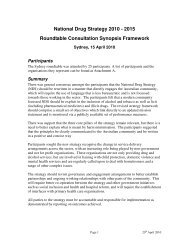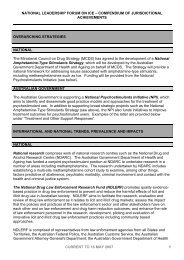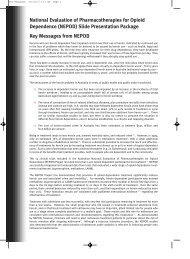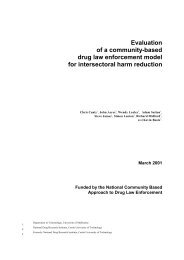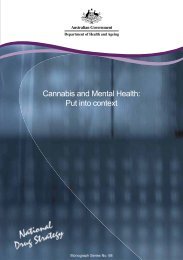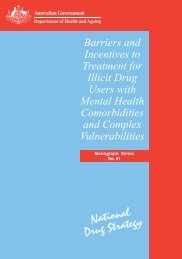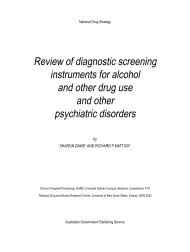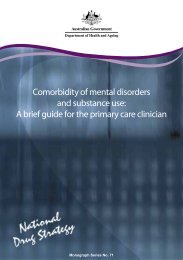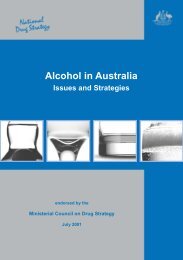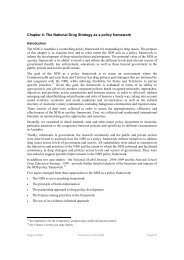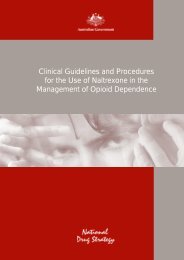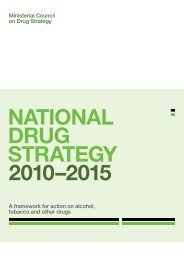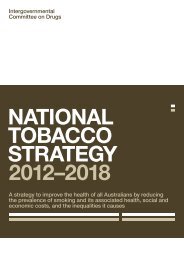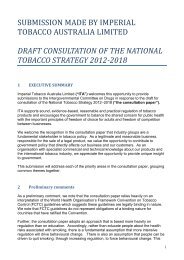A Guide for Frontline Workers - National Drug Strategy
A Guide for Frontline Workers - National Drug Strategy
A Guide for Frontline Workers - National Drug Strategy
You also want an ePaper? Increase the reach of your titles
YUMPU automatically turns print PDFs into web optimized ePapers that Google loves.
O different treatments have different goals. Some treatments are aimed at<br />
getting people completely heroin-free (often called ‘abstinence-based’<br />
treatment), such as therapeutic communities and many self-help groups<br />
(e.g. Narcotics Anonymous). Other treatments can be used to achieve<br />
abstinence, but are also able to stabilise people at a reduced, safer level of<br />
use (e.g. long-term methadone or buprenorphine program).<br />
O regardless of the treatment(s), any decrease in heroin use or the related<br />
harm is a positive outcome. For some people it may be that reduced or<br />
controlled use, stable relationships, employment or better health are more<br />
achievable than abstinence. These important changes may encourage<br />
abstinence in the future.<br />
O ‘slip ups’ or lapses should not be viewed as failure. Lapses are a normal<br />
part of changing any human behaviour. Every time they occur, a person can<br />
learn from the experience and develop better ways of dealing with a similar<br />
situation in the future. It may be that only through a number of unsuccessful<br />
attempts at controlled use a person decides on a goal of abstinence.<br />
4



